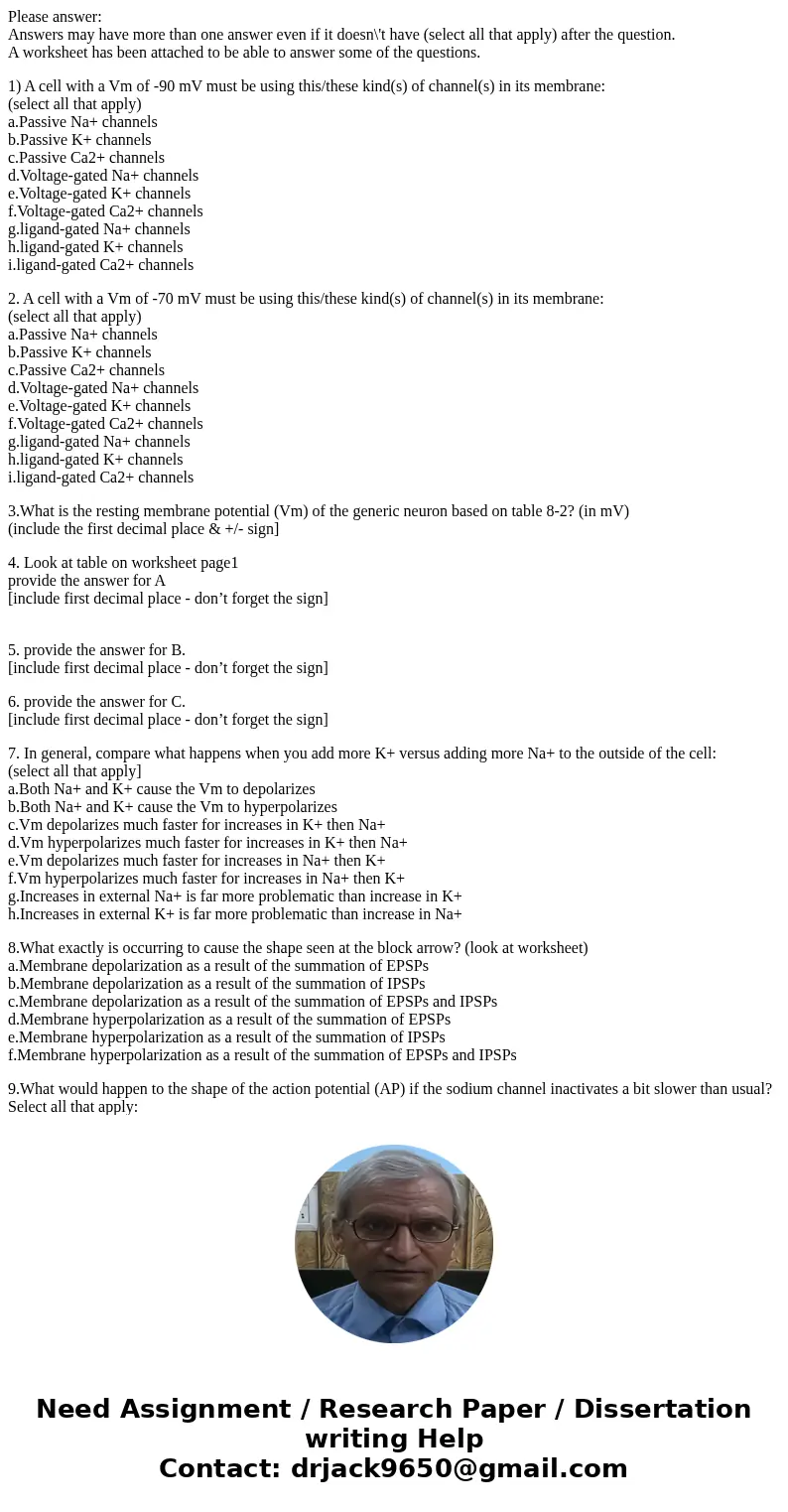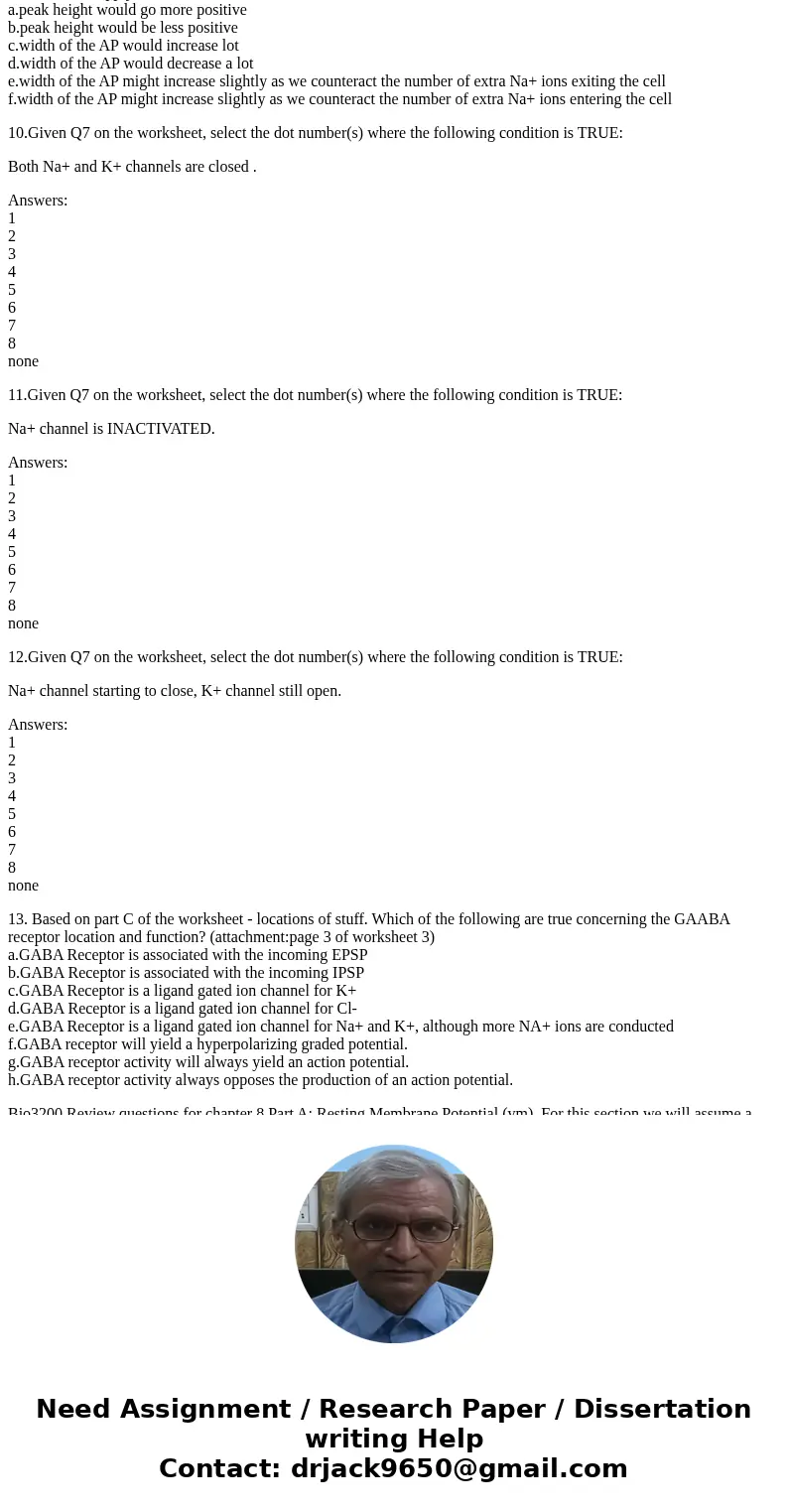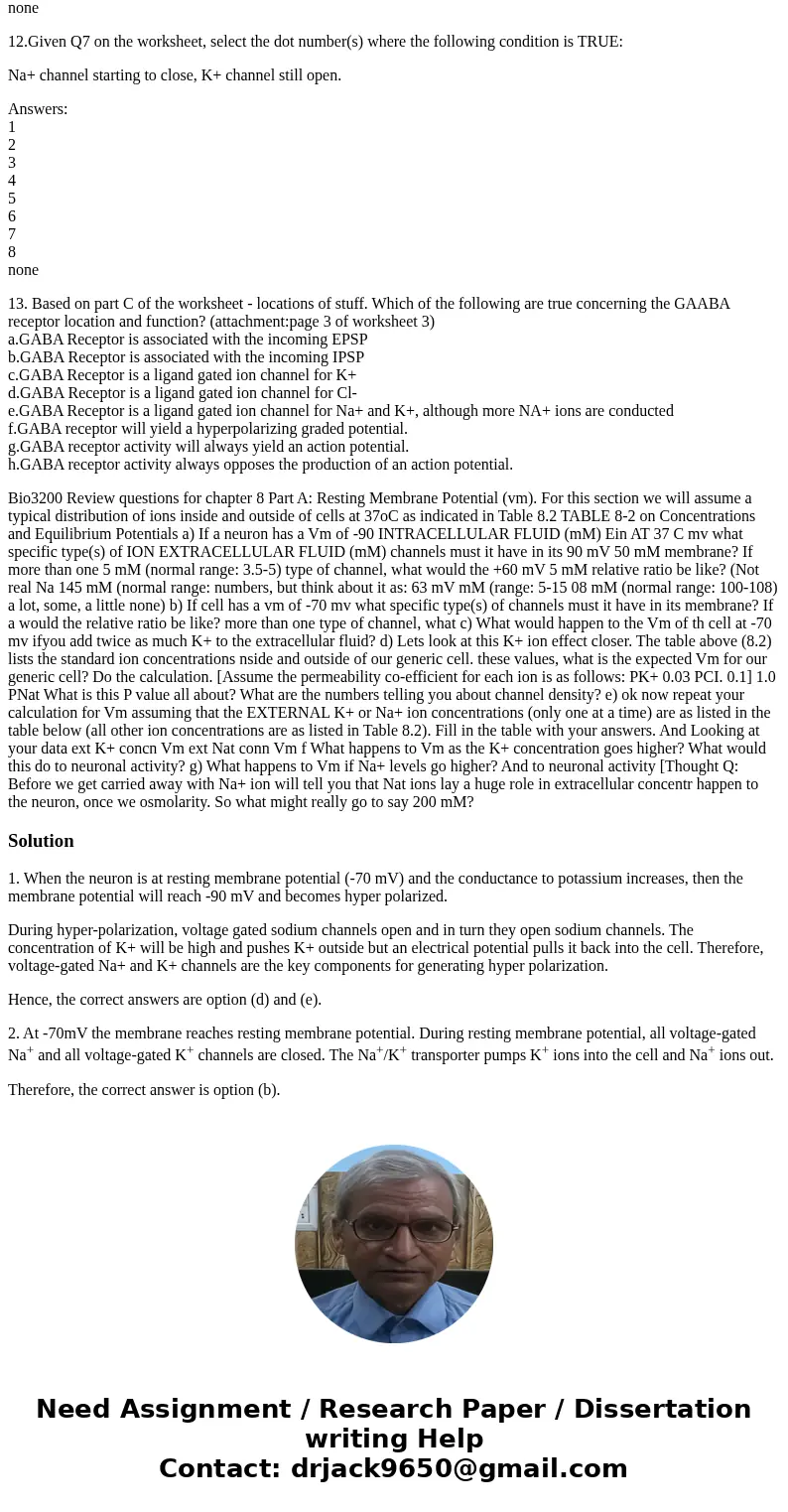Please answer Answers may have more than one answer even if
Please answer:
Answers may have more than one answer even if it doesn\'t have (select all that apply) after the question.
A worksheet has been attached to be able to answer some of the questions.
1) A cell with a Vm of -90 mV must be using this/these kind(s) of channel(s) in its membrane:
(select all that apply)
a.Passive Na+ channels
b.Passive K+ channels
c.Passive Ca2+ channels
d.Voltage-gated Na+ channels
e.Voltage-gated K+ channels
f.Voltage-gated Ca2+ channels
g.ligand-gated Na+ channels
h.ligand-gated K+ channels
i.ligand-gated Ca2+ channels
2. A cell with a Vm of -70 mV must be using this/these kind(s) of channel(s) in its membrane:
(select all that apply)
a.Passive Na+ channels
b.Passive K+ channels
c.Passive Ca2+ channels
d.Voltage-gated Na+ channels
e.Voltage-gated K+ channels
f.Voltage-gated Ca2+ channels
g.ligand-gated Na+ channels
h.ligand-gated K+ channels
i.ligand-gated Ca2+ channels
3.What is the resting membrane potential (Vm) of the generic neuron based on table 8-2? (in mV)
(include the first decimal place & +/- sign]
4. Look at table on worksheet page1
provide the answer for A
[include first decimal place - don’t forget the sign]
5. provide the answer for B.
[include first decimal place - don’t forget the sign]
6. provide the answer for C.
[include first decimal place - don’t forget the sign]
7. In general, compare what happens when you add more K+ versus adding more Na+ to the outside of the cell:
(select all that apply]
a.Both Na+ and K+ cause the Vm to depolarizes
b.Both Na+ and K+ cause the Vm to hyperpolarizes
c.Vm depolarizes much faster for increases in K+ then Na+
d.Vm hyperpolarizes much faster for increases in K+ then Na+
e.Vm depolarizes much faster for increases in Na+ then K+
f.Vm hyperpolarizes much faster for increases in Na+ then K+
g.Increases in external Na+ is far more problematic than increase in K+
h.Increases in external K+ is far more problematic than increase in Na+
8.What exactly is occurring to cause the shape seen at the block arrow? (look at worksheet)
a.Membrane depolarization as a result of the summation of EPSPs
b.Membrane depolarization as a result of the summation of IPSPs
c.Membrane depolarization as a result of the summation of EPSPs and IPSPs
d.Membrane hyperpolarization as a result of the summation of EPSPs
e.Membrane hyperpolarization as a result of the summation of IPSPs
f.Membrane hyperpolarization as a result of the summation of EPSPs and IPSPs
9.What would happen to the shape of the action potential (AP) if the sodium channel inactivates a bit slower than usual? Select all that apply:
a.peak height would go more positive
b.peak height would be less positive
c.width of the AP would increase lot
d.width of the AP would decrease a lot
e.width of the AP might increase slightly as we counteract the number of extra Na+ ions exiting the cell
f.width of the AP might increase slightly as we counteract the number of extra Na+ ions entering the cell
10.Given Q7 on the worksheet, select the dot number(s) where the following condition is TRUE:
Both Na+ and K+ channels are closed .
Answers:
1
2
3
4
5
6
7
8
none
11.Given Q7 on the worksheet, select the dot number(s) where the following condition is TRUE:
Na+ channel is INACTIVATED.
Answers:
1
2
3
4
5
6
7
8
none
12.Given Q7 on the worksheet, select the dot number(s) where the following condition is TRUE:
Na+ channel starting to close, K+ channel still open.
Answers:
1
2
3
4
5
6
7
8
none
13. Based on part C of the worksheet - locations of stuff. Which of the following are true concerning the GAABA receptor location and function? (attachment:page 3 of worksheet 3)
a.GABA Receptor is associated with the incoming EPSP
b.GABA Receptor is associated with the incoming IPSP
c.GABA Receptor is a ligand gated ion channel for K+
d.GABA Receptor is a ligand gated ion channel for Cl-
e.GABA Receptor is a ligand gated ion channel for Na+ and K+, although more NA+ ions are conducted
f.GABA receptor will yield a hyperpolarizing graded potential.
g.GABA receptor activity will always yield an action potential.
h.GABA receptor activity always opposes the production of an action potential.
Solution
1. When the neuron is at resting membrane potential (-70 mV) and the conductance to potassium increases, then the membrane potential will reach -90 mV and becomes hyper polarized.
During hyper-polarization, voltage gated sodium channels open and in turn they open sodium channels. The concentration of K+ will be high and pushes K+ outside but an electrical potential pulls it back into the cell. Therefore, voltage-gated Na+ and K+ channels are the key components for generating hyper polarization.
Hence, the correct answers are option (d) and (e).
2. At -70mV the membrane reaches resting membrane potential. During resting membrane potential, all voltage-gated Na+ and all voltage-gated K+ channels are closed. The Na+/K+ transporter pumps K+ ions into the cell and Na+ ions out.
Therefore, the correct answer is option (b).



 Homework Sourse
Homework Sourse